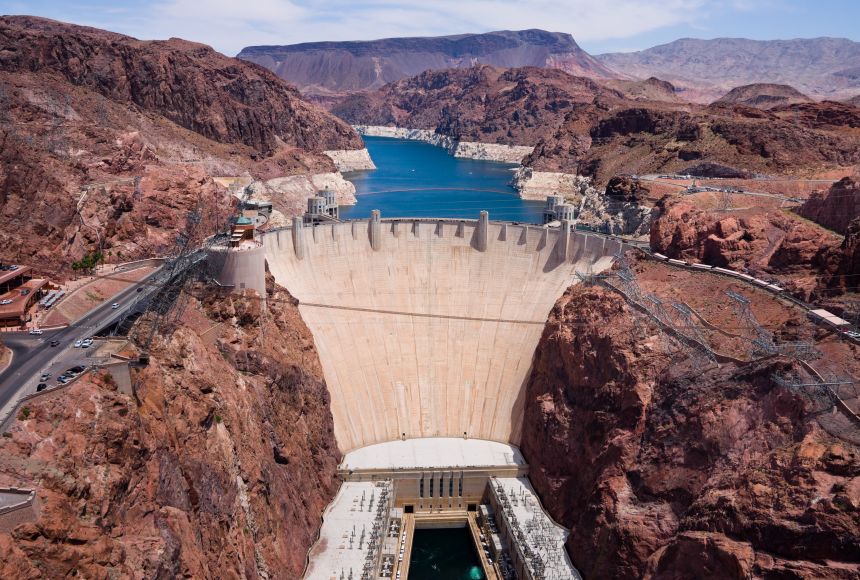ENCYCLOPEDIC ENTRY
ENCYCLOPEDIC ENTRY
Dams
Dams
A dam is a structure built across a stream or river to hold water back. Dams can be used to store water, control flooding, and generate electricity.
Grades
5 - 8
Subjects
Conservation, Earth Science, Geology, Meteorology
Image
Aerial view of the Hoover Dam
An aerial view of the Hoover Dam. This dam has been harvesting hydroelectric power for over 80 years now.
Photograph by Andrew Zarivny


Media Credits
The audio, illustrations, photos, and videos are credited beneath the media asset, except for promotional images, which generally link to another page that contains the media credit. The Rights Holder for media is the person or group credited.
Director
Author
Production Managers
Program Specialists
Producer
other
Last Updated
June 21, 2024
For information on user permissions, please read our Terms of Service. If you have questions about how to cite anything on our website in your project or classroom presentation, please contact your teacher. They will best know the preferred format. When you reach out to them, you will need the page title, URL, and the date you accessed the resource.
Media
If a media asset is downloadable, a download button appears in the corner of the media viewer. If no button appears, you cannot download or save the media.
Text
Text on this page is printable and can be used according to our Terms of Service.
Interactives
Any interactives on this page can only be played while you are visiting our website. You cannot download interactives.